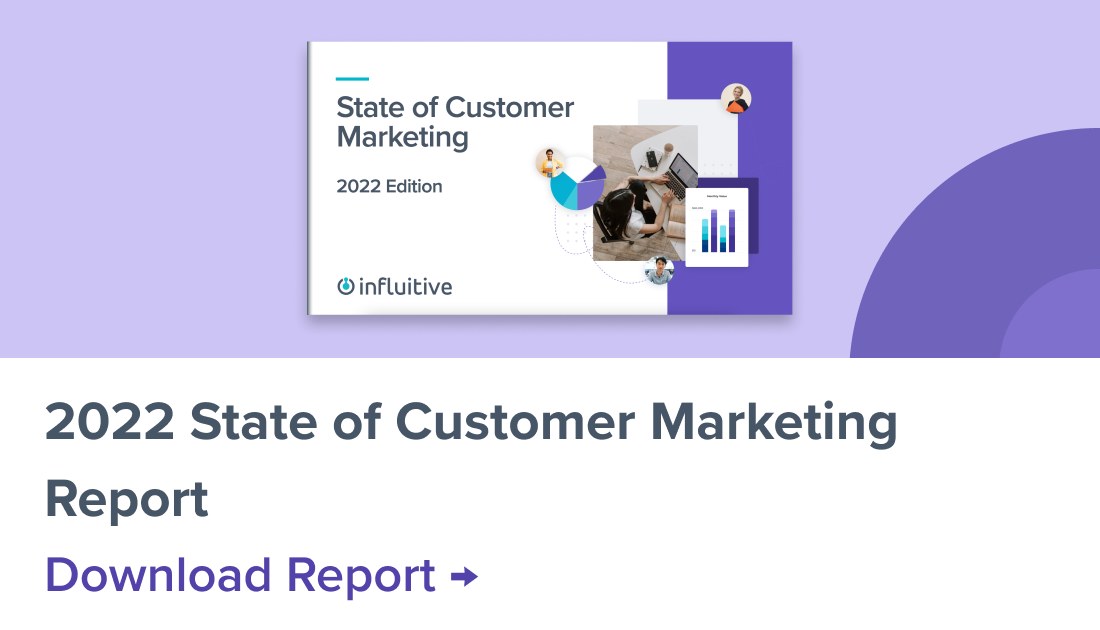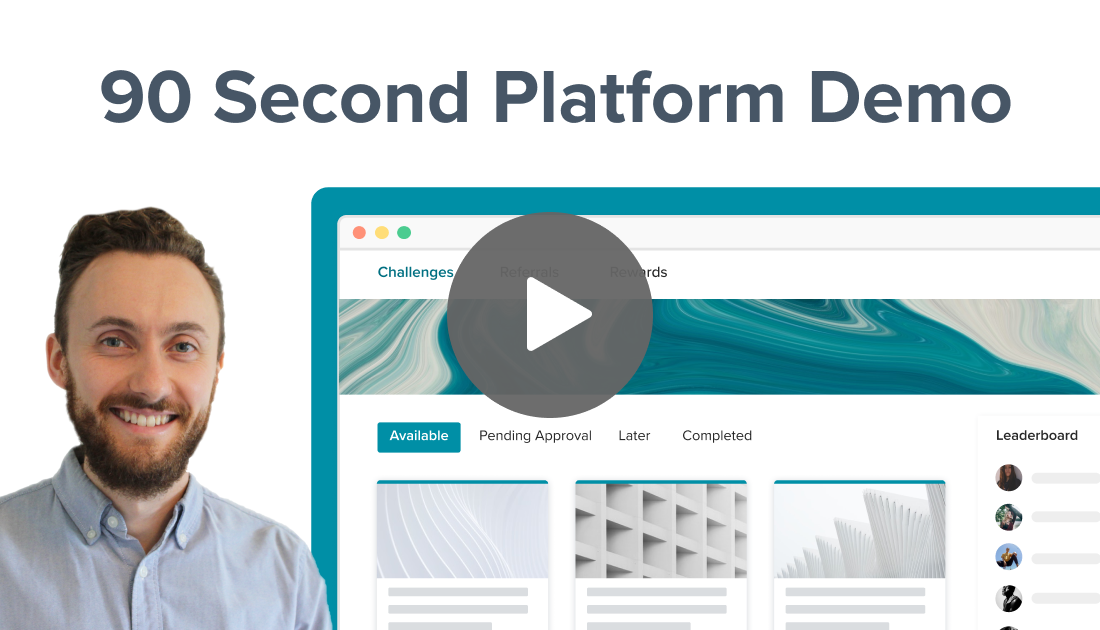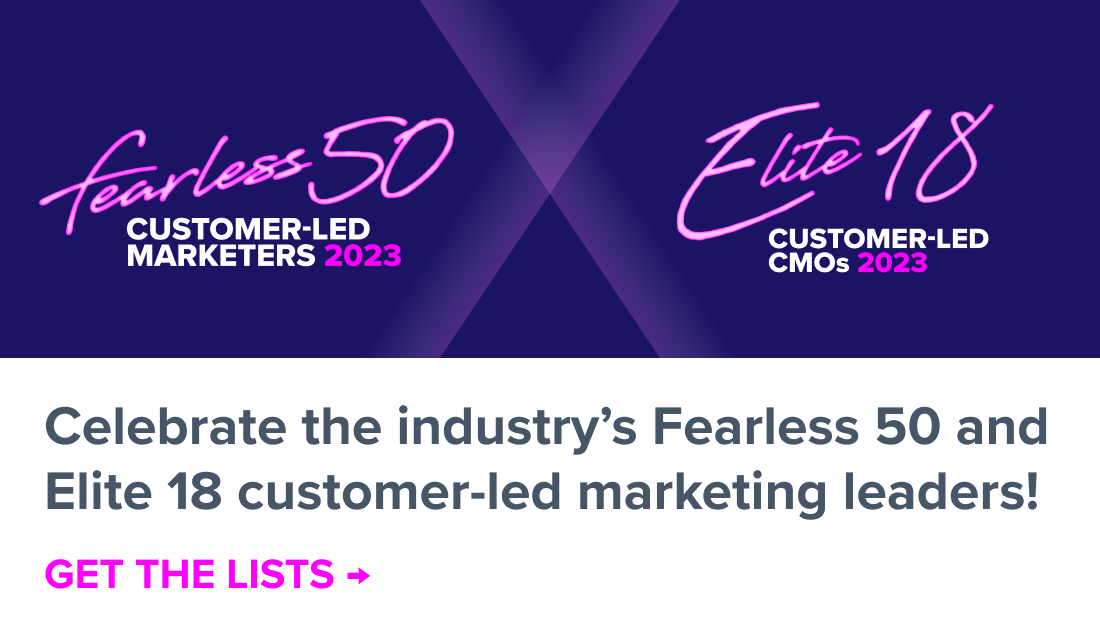Personal and professional transformation can be a powerful motivator for turning B2B customers into raving brand fans. However, many companies struggle to find customer success stories and deliver valuable opportunities to their customers. Kellee Van Horne, Marketing Leader at LinkedIn, has seen first-hand how helping customers succeed—and putting them in the spotlight—has bolstered her team’s customer advocacy efforts. In her Advocamp presentation, Kellee outlines how organizations can find existing success stories and create a strategic professional transformation plan that drives customers to advocate.
My name is Kellee Van Horne. I work at LinkedIn and I run customer marketing for our Sales Solutions business. Sales Solutions is responsible for helping sales people in LinkedIn build and nurture relationships with our customers who are using our platform. We have LinkedIn and then we also have a premium tool that we call LinkedIn Sales Navigator.
Because I work on the Customer Marketing team, I get to work with some of the world’s best sales people. Our customers are some of the most socially savvy people that you’ll ever meet, and they really understand the value of what we call Social Selling: being able to find the right person and engagement insights, connect with decision makers and build their professional brands, and how to propel opportunities for them and for their business.
It’s really inspiring to work with the salespeople that I work with. [It’s] one of the best parts of my job.
What I want to talk about today is how we use professional transformation and the role professional transformation plays in some of the advocacy that we see in the Sales Solutions business.
As I mentioned before, our customers are inspiring to me. And one of the things that’s most inspiring is not just the fact that they love Sales Navigator so much, but that they’re so dedicated to shaping it within their organizations.
For those of you that work in the B2B world, you know that being a B2B advocate is not always easy—even though we like to think that it is easy to implement our software or our platforms, and that we have something that’s plug-and-play. If you saw Chris Peltz’s presentation, where he shared a group of people that were involved in his advocacy community launch, you understand that it’s actually a little bit more complex than just having a software or program that works really well.
In reality, advocacy can actually be costly and risky. And this is true especially for the people that are decision makers and project champions. Not only are they taking on the work, the time and investment of actually either purchasing or rolling out these programs, they are also taking on the professional risk that comes along with failure. If the project isn’t adopted or doesn’t succeed, that actually reflects on them as well.
SAP did a study in February and asked B2B purchasers what their biggest concerns are when making a B2B purchase. Fifty-two per cent of them said the perception that they were wasting money at their company. Twenty-three per cent of them said their biggest concern was losing internal credibility. And so, it’s kind of scary out there. If you are the person who is championing a product or championing the service within your organization, and you really believe in it, you kind of have step out on a limb and make sure that other people are following behind.
One of our best advocates is a senior decision-maker at a large multinational corporation. He is extremely visible inside and outside of his organization. But he also spends countless hours working behind the scenes, making sure that cross-functional stakeholders are well-informed and putting together roll-out plans. And like I mentioned, he is very senior. So if I think about his role, his responsibility and his scope, he should probably spend about 5% of his time on Sales Navigator. Instead, he spends much more. And so, the question is why?
When I heard a story of him I thought, ‘Why is he so invested in this?’ And if you think about your own advocates and the people that are working tirelessly to make your program successful, what’s really motivating them? What’s driving them to do that? Some people might say competition, some people might say passion, some people are just very diligent and get things done. But I’d like to argue that there is a role that’s really, really powerful, and it’s the role of both the promise and the realization of professional transformation.
Professional Transformation
Some people really understand how valuable it is to be a changemaker, an innovator and the person who successfully champions a product or service within their organization. That is a motivating force for them because they understand that it will propel them to new opportunities.
If I think back to the senior decision maker that I was talking about before, he understands this. And if you ask him why he is such a champion, and why he is investing so much, he’ll tell you it’s because he knows if he is successful, it’ll continue to put him on a trajectory that will help propel him to new opportunities— both within his own organization and the industry. And he is a senior guy, so he still sees the value in it even though he has already excelled very significantly in his career. And that’s the power of the promise of professional transformation. It motivates people to do things they wouldn’t otherwise do, especially to benefit you and your programs.
I also want to talk about the realization of personal transformation. This is Teri. This is one of our wonderful, rockstar customers.

Last year, Teri joined Informatica. She was branding to her team, branding to her role and she wasn’t doing very well. She was actually at 35% attainment of her quota and she had a Social Selling index score (which is our measure of how well you use Social Selling activities in your sales process) of 55 out 100, which means it’s not a great score. So Teri worked with her sales manager. She spent a lot of time investing in making Sales Navigator part of her daily habits. And then, she also worked a lot on her Social Selling capabilities and best practices. And her attainment shot up. By the end of the same quarter, she was at 106% attainment of her quota and she also had her SSI score jump up to 78.9%, which shows that she is using the best practices that we taught her and instilled in her through the training.
Obviously we love her story. It made me really happy. So, we decided to invite Teri out to our headquarters. We decided to do photography, capture her success story and focus on her as an individual; focus on the things that she’s doing really well and the expertise that she’d developed by being an advocate of our program. It wasn’t just about Informatica. We were really creating a platform to elevate Teri and her success.
In addition, within her own organization, Teri started to get noticed. There was all this buzz going on about how well she had transformed and how much she turned around her performance. Senior leaders at her organization started noticing and asking her, ‘What are your best practices and what can we learn that we can spread throughout the organization?’
At the beginning of this year Teri got promoted. This is the power of the realization of professional transformation. Both of these, both the promise and the realization of professional transformation are really powerful for motivating the people who are championing and being advocates for your programs.
What I want to talk about today are ways that everyone here can start to harness the power of the motivation that comes with professional transformation.
1. Run an audit
Start with your existing success stories. Go through your organization, and understand: are there any stories of professional transformation that are already out there based on the people who are using your product? And again, it’s not about the companies. It’s not about the brands behind the individuals. It’s about the people that are actually being the champions within those organizations.
You could run a survey, you can poll people in your Influitive AdvocateHub if you have one. Just try to collect as much as you can. Then, once you’ve collected that, if you have enough stories break them into personas–either by role, purchasing role, or industry and try to see if there are any trends.
And then finally, see if there are any common ways that people have been recognized or rewarded externally. Is it promotions? PR opportunities? External awards? For example, in our industry, there’s the top 30 Social Sellers Award that Forbes published. That’s a great reward, great recognition. Our customers should be on that list.
2. Map your destination
Once you take stock of what you’ve already achieved and what’s already happened, then you can map your destination.
Start thinking about the three channels that are most important to communicate with the key audiences that will actually lead to your advocates’ professional transformation.
If you need to talk to their internal teams and their sales managers, equip the employee with an internal toolkit that they can use to promote themselves. Maybe you make sure you always send a note to the manager of the employer and the advocate to make sure they know the great work that they are doing is not going unrecognized.
If it’s external, like a news organization, then how do you start to create visibility for the great work your advocate is doing? It’s all about just making sure that your channel matches your audience, so that when you’re doing the work of promoting your advocate, it’s going to have the intended effect. And then of course, you want to set goals–because if you measure it, you are more likely to do it.
Finally, for each advocate that you actually choose, you want to try to embark on a professional transformation plan, and make sure you’re clear on what exactly you’re trying to achieve. It goes back to knowing the channels. If you’re really clear on what the end goal is, it will be much easier to get that for the person.
3. Showcasing your standards
Finally, make sure you are showcasing your standards. Of all the success stories that you collected at the top, choose one and make it the classic example that you can share with everyone in your organization and say, ‘This is what we want to achieve. This is where we’re going. This is sort of our advocacy. How can you help us?’
Ask your sales teams if they can identify people that would be the candidates for this at the beginning of the sales process. Maybe start thinking about what the rewards and recognitions are. You’ll also want to make sure that you’re training people on exactly what you’re looking for so they can start to see recognize a pattern.
And finally, make sure that you’re partnering. It’s obviously going to take a village to make this type of thing successful. You’ll probably partner with field marketing, your customer success team, and your social media team. Just map out exactly what you need and who you’re dependent on.
In many ways, thinking about professional transformation for our advocates is a real shift in mindset for the advocate marketer. I think a lot of advocate marketers spend a lot of time thinking about ‘How do we reward this advocate?’ But in reality, the question for professional transformation is how can the world reward them.
It’s a powerful way of making people loyal and motivated when it comes to your programs because it really hits at some of the deepest emotional needs that people have, which is to be and feel successful.











































